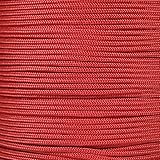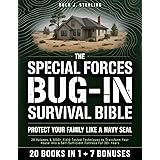Crafting a fundamental tool from nature is a core tenet of bushcraft, and the video above offers a glimpse into the methodical process of making a survival spear. This essential piece of primitive technology, honed by generations, represents a powerful blend of skill, resourcefulness, and understanding natural materials. Far from a mere stick, a well-made survival spear is a versatile instrument for defense, procurement, and even general utility in an outdoor setting.
Selecting the Right Wood for Your Bushcraft Spear
The foundation of any effective survival spear lies in its material: the wood itself. You need a shaft that combines strength, flexibility, and a relatively straight grain. Common choices for a bushcraft spear include hardwoods like ash, oak, maple, or even the resilient hazel and dogwood, known for their dense fibers and resistance to snapping.
When selecting your wood, look for a sapling or branch that is approximately 1 to 1.5 inches in diameter for the shaft. It should be as straight as possible to ensure balance and accuracy. While deadfall can be tempting, green wood often proves more durable and less brittle, though it will require a bit more effort to work with and may need to cure slightly.
Shaping the Spear Shaft: From Branch to Tool
Once your ideal shaft is selected, initial preparation begins. This often involves carefully sawing off any unwanted branches or excess length, as suggested by the sounds of wood being sawed. The goal is to achieve a uniform diameter along the majority of the shaft, preparing it for a comfortable grip and a balanced throw.
Sometimes, gentle splitting or shaving with a knife can help remove bark or refine the shaft’s straightness. This process, hinted at by the mallet sounds, is about transforming a raw piece of wood into a manageable and ergonomic handle. You might also use heat to gently straighten any minor bends in the wood, making for a truer shaft.
Carving the Spear Point: Precision and Purpose
The most crucial aspect of your survival spear is its tip. The rhythmic carving sounds in the video highlight the careful work required to create a functional point. Using a sturdy bushcraft knife, you will gradually taper one end of the shaft into a sharp, durable point.
Aim for a long, gradual taper rather than an abrupt spike, as this distributes force more effectively and reduces the risk of the tip breaking upon impact. The precise angle and length of the taper are critical; a too-blunt tip won’t penetrate, while a too-fine tip will be fragile. Maintaining sharp knife skills throughout this stage ensures both efficiency and safety.
Fire Hardening Your Spear: Enhancing Durability
The crackling fire sounds at the end of the video signal a vital step in primitive spear crafting: fire hardening. This technique significantly enhances the durability and penetrating power of the wooden tip. By slowly and carefully rotating the carved tip over hot coals or a smokeless flame, you char the outermost layer of wood.
After charring, scrape off the burnt layer with your knife, revealing a darker, denser wood underneath. Repeat this process several times, charring and scraping, until the wood fibers are compacted and resistant. This process removes moisture and hardens the wood, making it much tougher than untreated wood, greatly increasing the effectiveness of your survival spear.
Practical Applications of a Bushcraft Spear
A properly constructed survival spear is a surprisingly versatile tool in a wilderness environment. Its primary role is often considered for hunting small game or for spearfishing, as the video’s hashtag suggests. With practice, a well-balanced spear can be an effective way to secure food.
Beyond hunting, a spear offers critical self-defense capabilities against potential threats. It provides a significant reach advantage, creating distance between you and a hazard. It can also serve as a useful walking stick, a probing tool to test unstable ground, or even a lever for moving objects. The spear’s simplicity belies its extensive utility in bushcraft and survival scenarios.
Mastering Spear Crafting: A Foundational Bushcraft Skill
Learning to craft a survival spear is more than just making a tool; it’s about connecting with ancient skills and fostering self-reliance. This project teaches valuable lessons in material selection, woodworking techniques, and the physics of leverage and penetration. Each step, from the initial cut to the final fire hardening, builds competence and confidence in your bushcraft abilities.
Embracing the challenge of creating a functional bushcraft spear deepens your appreciation for primitive technology and the ingenuity of our ancestors. It’s a rewarding skill that stands as a testament to human adaptability, providing a tangible asset for outdoor preparedness and survival.











